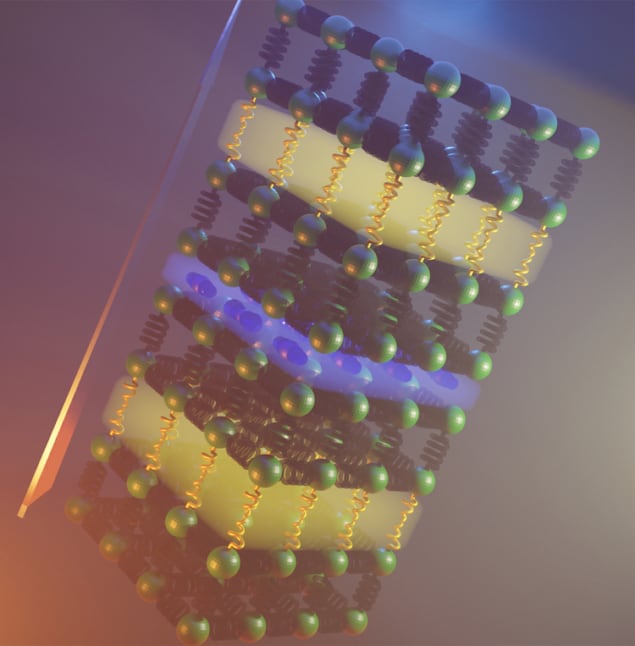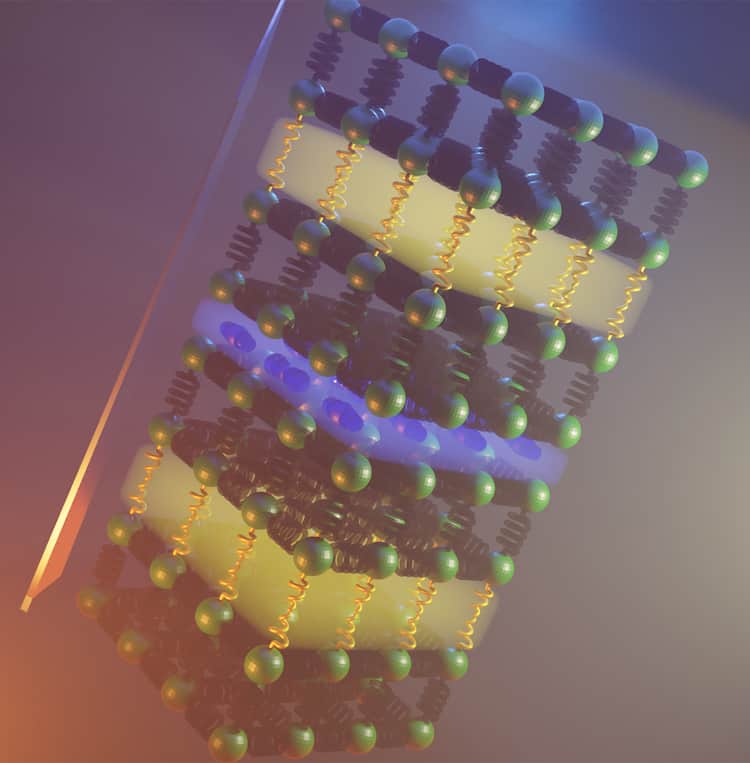
A new inorganic material with the lowest thermal conductivity ever reported could be a boon to technologies that convert waste heat into power. The material, which conducts heat almost as poorly as air, was designed and synthesized in a way that combines two different arrangements of atoms, each of which slows down the speed at which heat moves through it.
Of all the energy generated worldwide, a staggering 70% currently goes into waste heat. As well as being bad for the environment, waste heat also causes electronic devices to overheat, decreasing their efficiency and lifespan. Some of this heat can, however, be harnessed by using materials with a low thermal conductivity κ to convert it into electricity.
Reducing heat transport via phonons
A solid’s thermal conductivity stems from the behaviour of its phonons, which are vibrations of its crystal lattice. There are two main ways to reduce heat transport via phonons: reduce the length over which the phonons scatter, or reduce the speed at which they travel as a group.
The phonon scattering length depends on the scattering between phonons themselves and the scattering of phonons by defects or boundaries within the material. The phonon group velocity, on the other hand, depends on the structure and composition of the material. Researchers have previously tried to reduce the phonon scattering length by engineering defects in materials and producing materials with nanostructures specially designed to have a low κ. Other techniques include changing the layers between crystals to alter phonon interactions at the interface between the layers.
Synergistic combinations
In the latest work, Matt Rosseinsky, Jon Alaria and colleagues at the University of Liverpool, UK, produced a composite material containing layers that selectively target phonons travelling along and across the material’s bulk. By interfacing layers of BiOCl and Bi2O2Se with Bi4O4SeCl2, they succeeded in suppressing (respectively) the contributions of longitudinal phonons and transverse phonons to the material’s total thermal conductivity. The resulting composite has a thermal conductivity of just 0.1 W K/m at room temperature along its stacking direction — among the lowest of any bulk inorganic material and only four times greater than the thermal conductivity of air.
“The starting point of the new research was to understand how the structure of a material would allow us to control heat transport through it,” Rosseinsky and Alarai explain. During their ongoing five-year-long investigation into so-called multiple anion materials, they first needed to develop new chemistry that would allow them to synthesize their material by synergistically combining two different and unusual arrangements of atoms. They also needed to identify the mechanisms responsible for reduced heat transport in each arrangement by measuring and modelling the thermal conductivities of the different structures involved.
“It is difficult to combine the mechanisms in a single material because you have to control exactly how the atoms are arranged within it,” they explain. “Intuitively, you would expect to get an average of the physical properties of the two components. By choosing favourable chemical interfaces between each of these different atomic arrangements, we experimentally synthesized a material that combines them both.”
Improved low-κ materials
Importantly, the new material has a much lower thermal conductivity at room temperature than either of the materials containing just one such arrangement. This unexpected result shows that the location of the different atoms in the structure is important, and it helps to explain why the properties of the whole are better than those its component parts.

Heat transport theory goes universal
Rosseinsky, Alaria and colleagues now hope to optimize the electronic properties of their material to create a thermoelectric. They also plan to transfer the new design principle to other classes of inorganic material that could be employed in thermal barrier coatings for gas turbines. These coatings need to have a thermal conductivity lower than that of silica glass, which has a κ of 0.9 W/K/m.
According to the researchers, their strategy of combining different atomic arrangements to maximize their effectiveness in reducing heat flow has not yet reached an endpoint. “These materials could be improved even further by optimizing the arrangement of each of the structures individually before combining them,” they tell Physics World.
Full details of the research are reported in Science.
